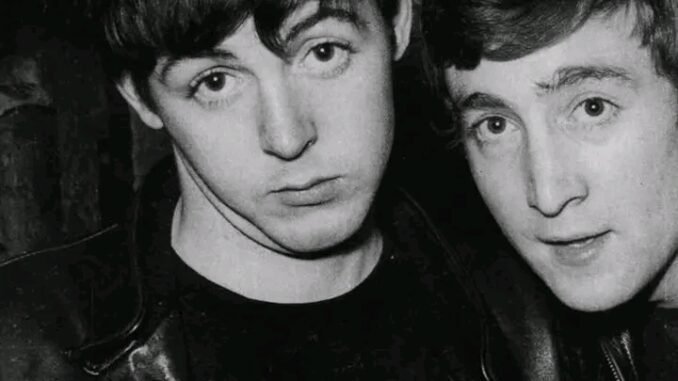
John Lennon met Paul McCartney on a warm summer afternoon in 1957, in the bustling docks of Liverpool. The air was thick with the scent of sea salt and the hum of distant voices, but for these two boys, the world had shrunk to a small corner of a modest church hall. Neither of them knew that this chance encounter would ignite a musical revolution, but at that moment, it was just two kids with guitars, sweat soaking into their shirts, exchanging nervous jokes and shy smiles.
Paul was the more confident of the two, with a natural gift for melody and an impressive grasp of chords for his age. His guitar case was battered but well-loved, and he carried himself with a quiet assurance that belied his youth. John, on the other hand, was the outsider—leaner, sharper, with an edge that hinted at a restless spirit. His guitar was more worn, his voice more raw, and there was a mischievous glint in his eye that suggested he saw the world differently.
They quickly discovered a shared passion for music, but their styles couldn’t have been more different. Paul’s songwriting was polished, structured—his melodies catchy and bright. John’s work was edgier, more experimental, often tinged with a rebelliousness that challenged conventions. It wasn’t harmony they shared, at least not at first. It was friction—a dynamic tension that sparked energy and possibility. Their differences created sparks, and those sparks would ignite something extraordinary.
In those early days, their collaboration was raw and imperfect. They spent hours trying to write songs, often arguing over chords or lyrics. Paul would think in terms of a polished pop tune, while John pushed for something grittier, more honest. They didn’t see themselves as legends then; they were just two boys trying to write songs that didn’t sound stupid, trying to find their voice in a world that often felt too loud or too dull.
But amidst the awkwardness and mistakes, something clicked. Not perfectly, not neatly, but enough. The chemistry was undeniable. Their shared energy fueled their creativity, and gradually, their differences became assets rather than obstacles. Paul’s melodic sensibilities balanced John’s raw edge, and John’s daring pushed Paul beyond his comfort zone. Together, they forged a new sound—one that combined catchy hooks with a rebellious spirit, a blend that would eventually captivate millions.
As months turned into years, their partnership deepened. They formed a band—initially The Quarrymen, then The Beatles—and their collective ambition grew. They played small clubs and rented halls, honing their craft, experimenting with new sounds, and writing songs that reflected their evolving identities. Their early compositions were simple, often playful or introspective, but layered with potential.
The world was changing too. The post-war years brought a wave of cultural shifts, and youth culture was beginning to flourish. Rock ‘n’ roll was exploding in America, and the Beatles, with their infectious energy and innovative sound, became part of that movement. Their music was a mirror
Leave a Reply